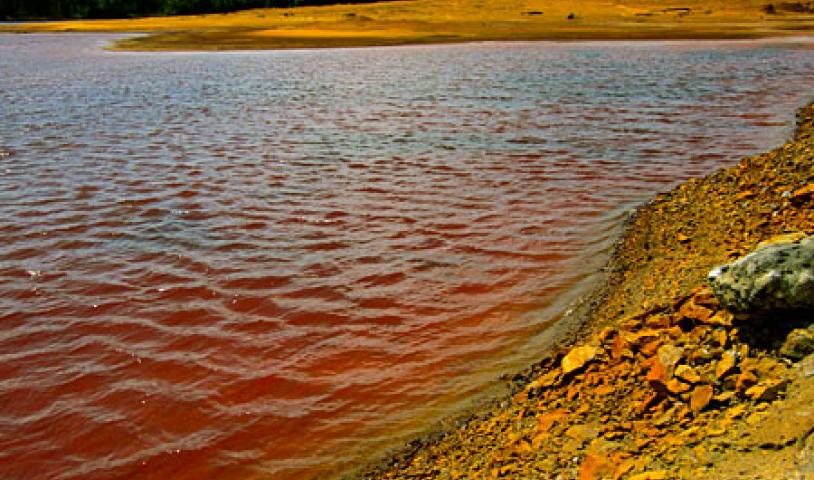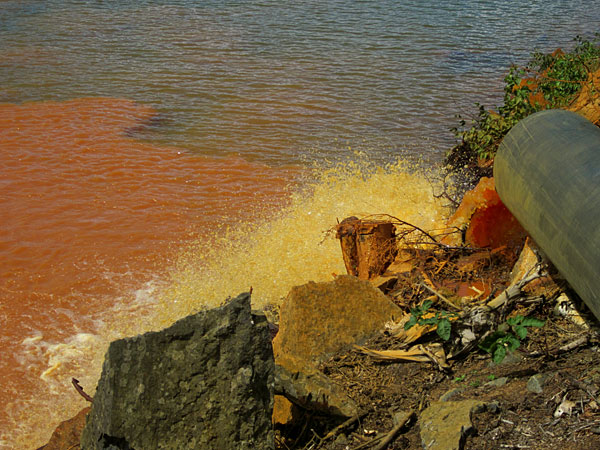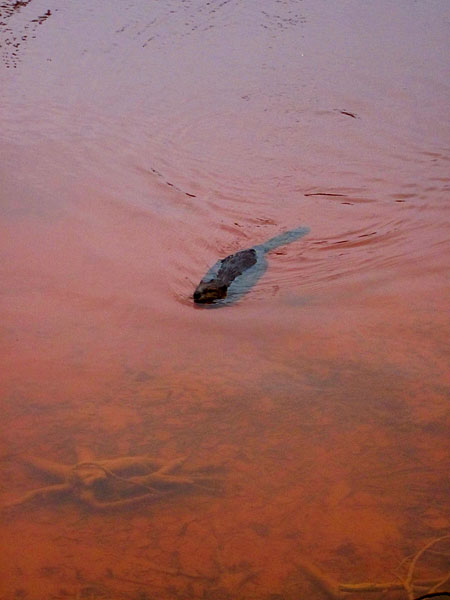Is Manitoba the wild‑west for the mining industry?
Friday, May 27, 2011
The alarm bells are ringing in the Wilderness Committee office. You may recall hearing this past December about the disturbing dumping of orange, acidic, heavy-metal laden water into a northern boreal lake. Six months later both the Wilderness Committee and the community of Sherridon are still seeking answers to this serious ‘malfunction.’ It is evident that our government has bitten off more than it can chew when it comes to the mining industry’s impact in Manitoba.
After national media attention, I wrote several provincial and federal departments seeking explanation and accountability regarding the failure of the water treatment plant in Sherridon. What I received in return was shameful avoidance tactics at both federal and provincial levels of government.
Let me break it down:
- Environment Canada excused themselves and directed me to Manitoba Water Stewardship and Manitoba Innovation, Energy and Mines
- The Department of Fisheries and Oceans simply didn’t respond
- Manitoba Conservation directed me to Manitoba Innovation, Energy and Mines
- Manitoba Water Stewardship directed me to Manitoba Innovation Energy and Mines
Seems laughable doesn’t it? This is the responsibility of ALL of these departments. At this point we have still not received a public account of this toxic event. I did receive a response from Innovation, Energy and Mines assuring me that they were looking into the matter and that in the case of another malfunction, no untreated water would be released.

'Treated' water flowing from the rehabilitation project
Currently the rehabilitation project is behind schedule. The community recently reported no outflow from the water treatment plant because it is struggling with raising the acidic water to a pH to 9. At least Innovation, Energy and Mines is holding true to not further polluting the lake with this most recent malfunction.
Our governments are caught in a web of inter-departmental, playground finger pointing which leaves me wondering who has a watchful eye on Manitoba’s mining industry? The Sherridon rehabilitation project is indicative of the ability of our government to deal with the toxic legacies the mining industry is sprinkling throughout our province. Clearly it is difficult and risky to reclaim the wastelands left behind, if we can’t clean it up should we be so willing to give our natural heritage away and compromise our protected areas for short-term economic gain?
I’m left asking, if Conservation, Water Stewardship, Fisheries and Oceans and Environment Canada aren’t looking over the mining industry, who is? This leaves the mining industry as an environmental steward, which is an unsettling thought to say the least. There is no doubt that mining is a dirty and destructive industry. Are they going to ensure our lakes remain clean and our wilderness pristine? Worldwide, controversy and the mining industry go hand in hand. For example, this past fall a plan from British Columbia’s Taseko Mine Limited was denied after it was met with harsh opposition nationwide and particularly from the local Tsilhqot’in people. They proposed to build an open-pit copper and gold mine, which would use the spectacular Fish Lake as a mining waste dumpsite. This aptly named lake hosts a population of 90 000 fish, including rainbow trout and is also ranked by BC Tourism as one of the top ten recreational fishing lakes in the province. The proposal was ultimately denied but Taseko Mines Ltd is still pushing forward with plans to resubmit the proposal. A similar project to use a boreal lake as a tailings impoundment has already passed through environmental assessment in northern Manitoba at Bucko Lake with little public awareness. Another local example of the mining industry as an ‘environmental steward’ can be recalled from October when the Wilderness Committee rang alarm bells for the proposed Red Deer Wildlife Management Area. Instead of protecting the whole region, vast key pieces of this lowland wilderness are being left out of the proposal and unprotected and open to the devastating impacts of coal strip-mining.

Beaver going for a swim in the acidic, heavy-metal contaminated waters at the government operated Sherridon Mine Rehabilitation site
It is obvious that we cannot trust the mining industry to make decisions for the health of our wilderness. Considering that approximately 80% of mining in Canada occurs in the life-giving boreal forest, we need to see large areas of this magnificent forest designated for protection, areas that haven’t been passed over by the mining industry first. We need and deserve wilderness that is protected for its ecological merit, not its potential value as a mine.
- Paloma
